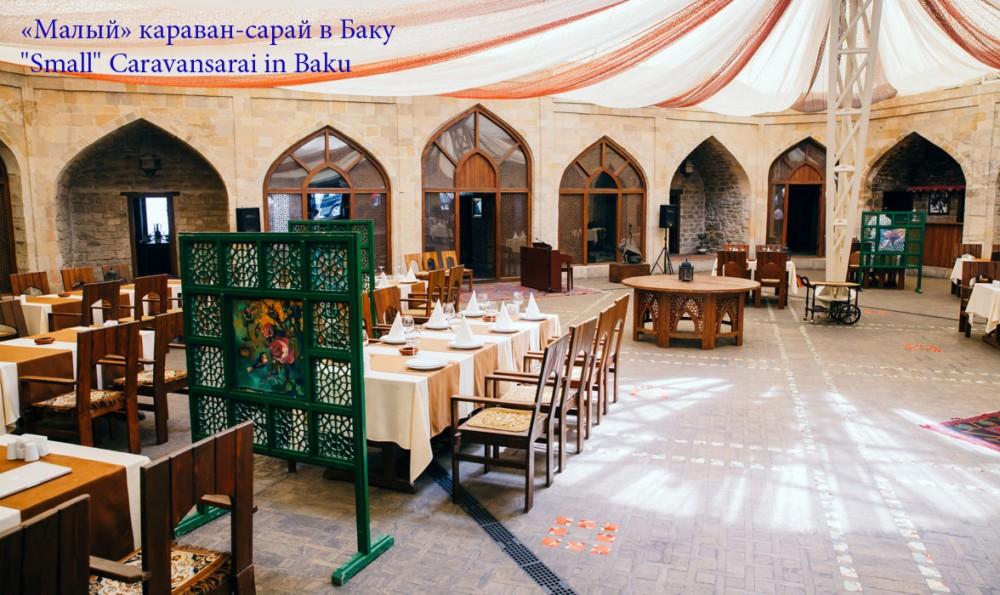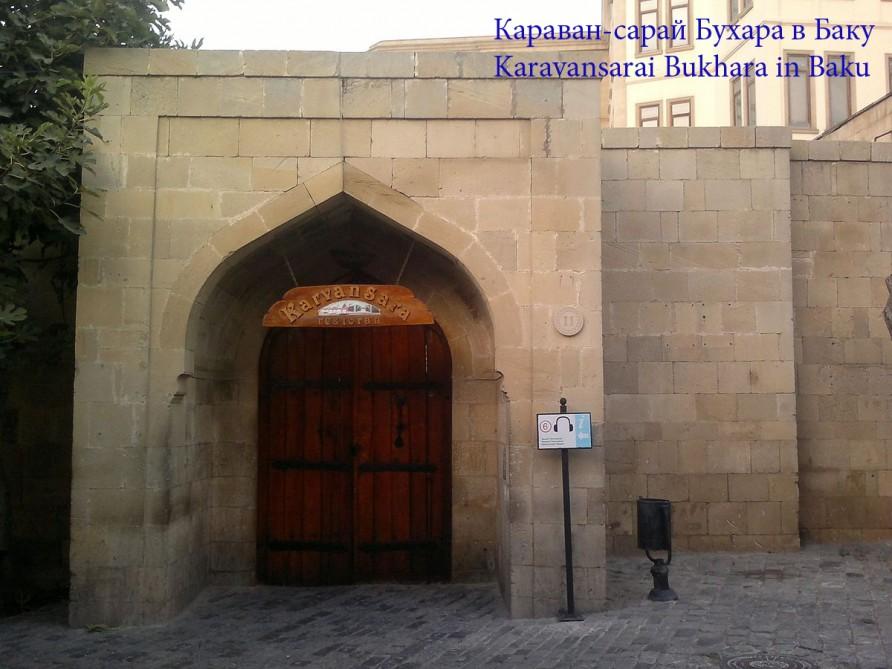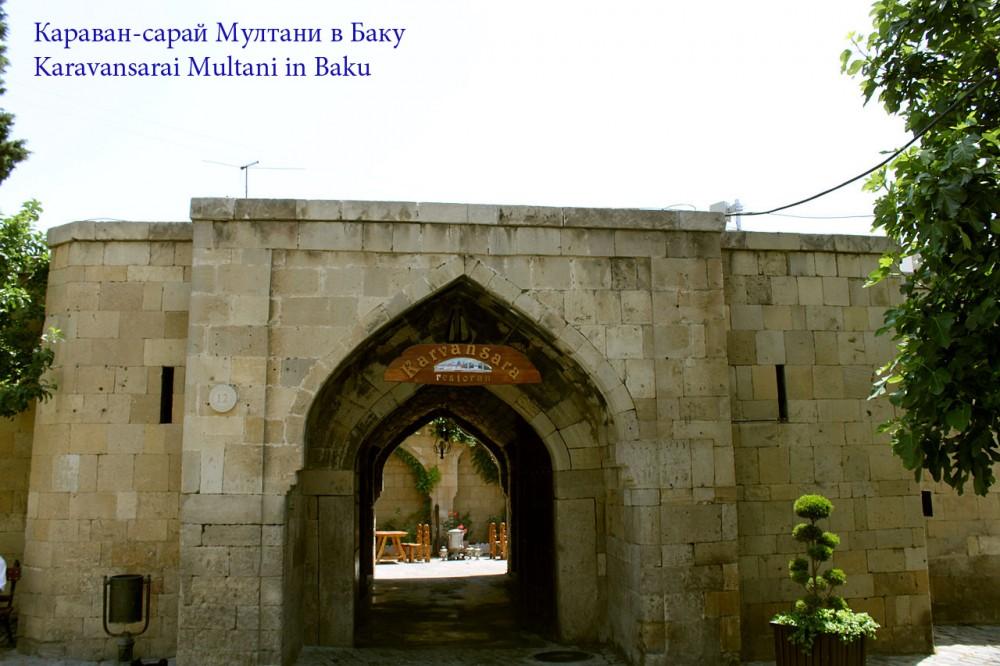Azerbaijan's majestic caravanserais [PHOTO]
![Azerbaijan's majestic caravanserais [PHOTO]](https://www.azernews.az/media/2019/11/06/kk-3-991x500.jpg)
By Laman Ismayilova
Throughout the ages, Azerbaijan has been part of the trade route between East and West, welcoming merchants from across land and sea.
The country has been a major center for the exchange of goods and merchandise and served as the "gate" between mysterious faraway China and rich Europe.
For nearly two thousand years, merchants traveled the Silk Road routes running from China to the West.
Thousands of traders flocked to such Azerbaijani cities as Shaki, Ganja, Baku and others from around the world. Oil, carpets, raw silk, silk fabrics, cotton, weapons, dried fruits, salt, precious stones were the main exports of Azerbaijan.
The caravan trade could generate huge profits but was quite risky. That's why merchants sought to trade not alone but in large caravans of thousands of armed men.
Caravanserai was a building with a square or rectangular walled exterior, with a single portal wide enough to permit large or heavily laden beasts such as camels to enter. It provided water for human and animal consumption, washing.
So, it is not surprising that a lot of caravanserais were built in Azerbaijan. Let's stroll through some of the most fascinating caravanserais.
Caravanserais in Baku
Azerbaijan's capital city offers an endless delight for travelers including a rich history and incredible caravanserais.
Bukhara caravanserai was erected at the end of the 15th century on the trade highway that passed through the Shamakhi Gate of the fortress.
The caravanserai was a small one-story, rectangular building. It has 18 vaulted rooms and a courtyard with a pond in the center.
Surrounded by beautiful balconies, it served as an excellent resting place for merchants and travelers after daily trading deals. The bulk of the architectural composition has been formed by a variety of arches situated around the inner courtyard.
In 1964, the Bukhara caravanserai was restored and as a result, the caravanserai building was separated from its annexes built earlier.
Located opposite the Bukhara caravanserai, Multani caravanserai is a monument of national importance.
The caravanserai was built in the 14th century who came from the city of Multan. Now Multan is a city in Pakistan. It is assumed that these people erected the Ateshgah Temple in Surakhani.
Multani caravanserai served as a stopping point for merchants and fire worshipers from India. The caravanserai has a square shape. The construction of the building is in an ancient style. There are a lot of balconies around the courtyard. There are also separate rooms-cells, designed for individual housing.
A caravanserai known as a small or "Khan caravanserai" was built in the 12th century.
Square building has a large quadrangle with truncated corners. It is surrounded by a balcony, behind which there are living rooms. The northern and southern entrances of the caravanserai are in the form of portal.
In the Middle Ages, the main entrance portal of caravanserai was from the sea-side while its southern facade was two-storey and had the shape of a defensive structure.
Before functioning as a caravanserai, there was a Muslim educational institution in this building which comprised Juma Mosque and its medrese. The cells were intended for students living in this seminary.
Currently, the Art Garden operates on the territory of this ancient monument. Art Garden combines the Art Gallery, several artisan workshops and a restaurant of national and European cuisine. Each of the caravanserai cells is now decorated by various Azerbaijani artists.
Caravanserais in Shaki
Shaki, being one of the most ancient cities of Azerbaijan, is rightly called the country's architectural reserve. The city is home to dozens of monuments, historical sites.
In the 18th-19th centuries, there were five large caravanserais in Shaki. Only two of them have survived till our time. They are the largest in the entire South Caucasus in terms of their layout structure, large sizes and convenience for trade.
If you're interested in exploring the history of Azerbaijan through its landmarks, Upper and Lower Caravanserais in Sheki are worth seeing.
The caravanserais were built in the 18th century. The cellars were used for storing goods, the first floor was for trading, and the second floor was where travelers and merchants would stay. The caravanserais are rather big: the Upper Caravanserai is 6,000 square meters, and the Lower one is 8,000 square meters.
The lower caravanserai has 242 rooms. There are entrance gates on four sides of the building.
The upper caravan-shed consists of more than 300 rooms.
The main facade of the building faces the bank of the river. At the same time, the arch of the main courtyard entrance is located in the corner of the building, at the level of the third floor, which is caused by a large slope of the relief along the river.
All the premises in the building of the caravanserai are of equal size and have a vaulted overlap. Now it functions as a hotel complex called Shaki Saray Hotel. Ancient massive doors with bells attract the interest of the hotel guets.
Caravanserais in Ganja
Azerbaijan's second largest city, Ganja surprises with architectural treasures. Being located on the main caravan routes, medieval Ganja was known as an important centre of craft and trade throughout the Near and Middle East. The city is famous for its beautiful caravanserais.
Shah Abbas caravanserai was built in the beginning of the 17th century in Ganja by the order of the then ruler Shah Abbas. The caravanserai is part of the historical architectural ensemble created by the architect Shaykh Bahauddin, which also includes the Juma mosque (Shah Abbas mosque) and Chekyak-Hamam (medieval bathhouse).
Burnt bricks and a mixture of egg white, lime and clay were used in the building of construction.
The two-story caravanserai was built in the oriental style and includes 15 halls and 54 cells. There are places for pack animals in the yard. Servants, cooks and musicians worked in the caravanserai to serve the guests.
Until recently, the building of the medieval caravanserai played the role of the Abode of Knowledge - at the end of the 20th century Ganja Humanitarian College was located here. The museum of the poetess Mashati Ganjavi was also housed in the caravanserai. After the restoration, the caravanserai acts as a museum.
Ugurlu Khan caravanserai was built in the early the 17th century by architect Sheikh Bahaddin Mohammed Amil.
The clay-lime mixture and egg whites, red bricks were used in the construction of the building. Both caravanserai are interconnected by four internal passages. The Ugurlu Khan caravanserai is built in a typical feudal style and contains two large courtyards in the complex.
Some mistakenly believe that the caravanserai bears the name of the son of the last ruler of the Ganja Khanate of Javad Khan, Ugurlu Khan.
The construction of the caravanserai dates back to the 17th century, while Javad Khan lived in the18th-19th centuries. It's highly probable that the caravanserai was built with funds from Ugurlu Khan I, the nephew of Ganja Baylarbayi (1663-64) Murtuzaguluhana Ziyadoglu and bears his name.
After the capture of Ganja by Russian troops in 1804, Ugurlu Khan caravanserai like all khan's property was confiscated. Afterwards, one of the caravanserai halls was rented by Sherbatlars-manufacturers of silk kerchievs, after which the people named the caravanserai "Sherbatchi".
---
Laman Ismayilova is AzerNews’ staff journalist, follow her on Twitter: @Lam_Ismayilova
Follow us on Twitter @AzerNewsAz
Here we are to serve you with news right now. It does not cost much, but worth your attention.
Choose to support open, independent, quality journalism and subscribe on a monthly basis.
By subscribing to our online newspaper, you can have full digital access to all news, analysis, and much more.
You can also follow AzerNEWS on Twitter @AzerNewsAz or Facebook @AzerNewsNewspaper
Thank you!








